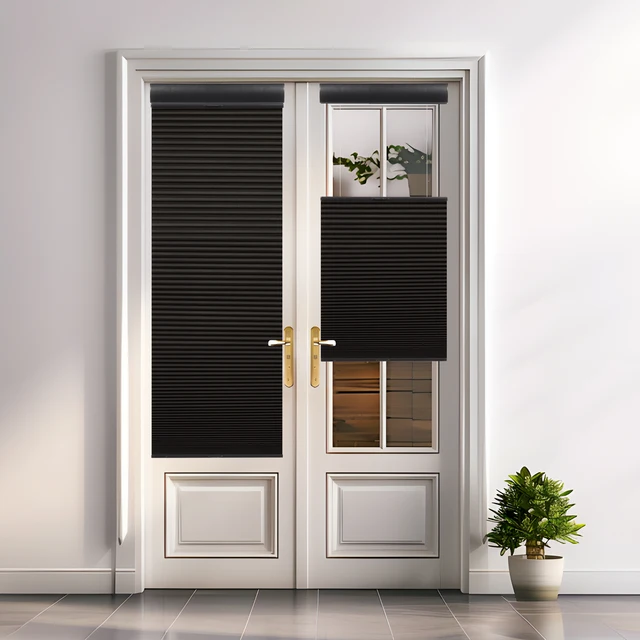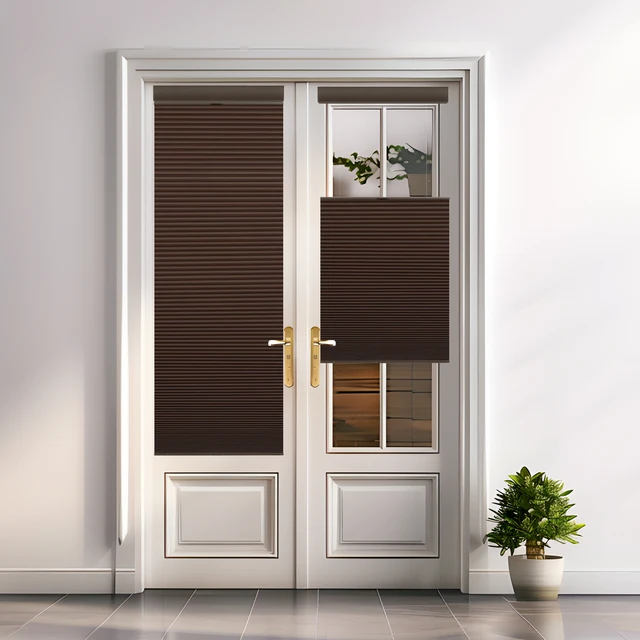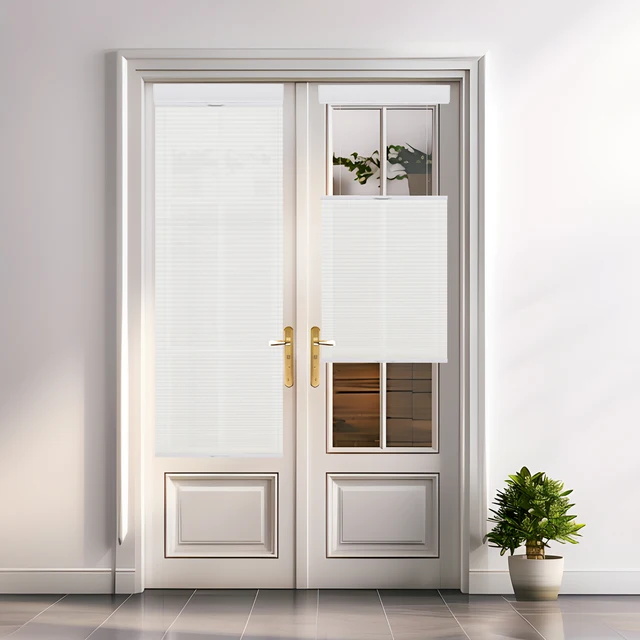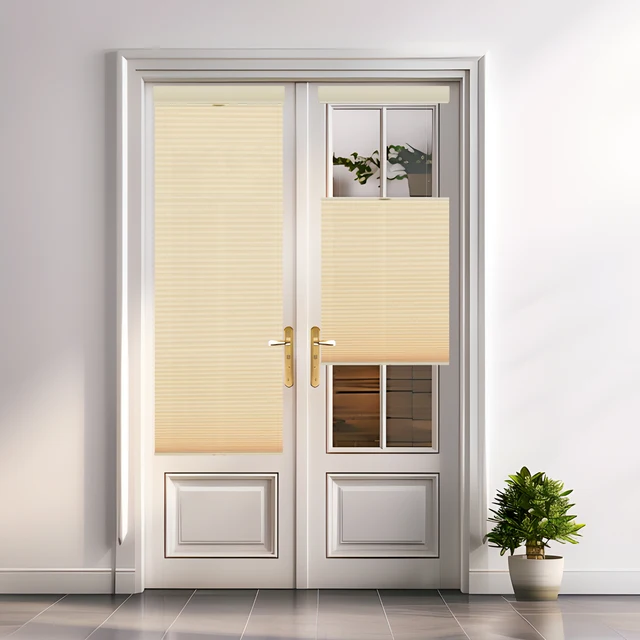Why Replace Your Blinds
Blind is a crucial part of home decor and functionality.In-Pane Elegance: The Rise of Windows with Blinds Inside However, like any other home element, they wear out and need replacement. Changing your blinds could enhance your room’s aesthetics and regulate light more effectively. Furthermore, new blinds can improve energy efficiency by better insulating the space and reducing sunlight exposure, which can fade furniture and increase cooling costs.
Signs It’s Time to Replace Your Blinds
How can you tell it’s time to replace your blinds? Look out for obvious signs of wear and tear. These include discoloration, broken or bent slats, and difficulties in operation, such as raising or lowering the blinds. If blinds have become hard to clean or retain smells, consider replacing them. Additionally, upgrading to newer models could provide better UV protection and materials that are easier to maintain.
When to Repair vs. Replace Blinds
Deciding whether to repair or replace your blinds depends on several factors. Minor issues, like a loose cord or a single broken slat, can often be fixed easily and inexpensively. However, if your blinds have multiple damaged parts or if the mechanism fails to operate smoothly, replacement might be a more cost-effective and hassle-free option. Also, if your blinds no longer match your current home decor or you’re renovating your home, replacing them could be beneficial for a fresh new look.

Preparing to Replace Your Blinds
Preparation is key to a successful blind replacement project. Start by assessing your current window treatments. Consider the look and functionality you want from new blinds. This will guide your choices as you move forward.
Measure Your Windows for Accurate Fit
Correct measuring is crucial for blinds that look great and work well. Here’s how to do it:
- Use a reliable tape measure.
- For inside mounts, measure the width at the top, middle, and bottom inside edges of the window frame.
- Record the narrowest width and the longest height for precise blinds.
- For outside mounts, measure the width and height you wish to cover.
- Add extra inches to width and height to ensure full coverage.
- Repeat these steps for each window to ensure accuracy.
Remember, even slight measurement mistakes can lead to blinds that don’t fit. Double-check your numbers or seek professional help if unsure.
Choosing the Right Blinds for Your Space
Picking new blinds involves more than just measuring. Here’s what to look for:
- Pick a style that matches your room’s decor. Wood blinds, Roman shades, and roller shades are popular choices.
- Think about the material. Faux wood blinds are durable and easy to clean. Fabric shades add a soft touch to your space.
- Consider color. Neutral shades blend easily, while bold colors make a statement.
- Decide on features. Room darkening blinds are ideal for bedrooms, while cordless options are safer for homes with kids.
Go for blinds that cater to your privacy, light control, and aesthetic needs. They should align with both the function and style of your room.
Selecting Your New Blinds
When it’s time for new blinds, choosing the right ones is crucial. Consider the variety of options and how they work with your space.
The Variety of Materials and Styles
There’s a wealth of choices when it comes to materials and styles. Wood, faux wood, aluminum, and fabric are all popular. They come in Venetian, roller, Roman, and more. Think about durability, maintenance, and looks. Pick what suits your home vibe and everyday demands.
Understanding Light Control and Privacy Needs
Blinds play a big role in controlling light and securing privacy. Transparent or sheer options gently filter light, keeping rooms bright. Room darkening and blackout options give total privacy and block out unwanted light. Think about room use and preferences. Bedrooms may need more privacy than living rooms.
Coordinating with Your Home’s Decor
Your blinds should match your room’s style and colors. Neutral colors like white, beige, or gray work with many decors. Bolder shades add personality and focal points. Consider the overall theme. Choose blinds that complement, not clash with your home’s design. They should tie the room together, enhancing its appeal and comfort.
The Replacement Process
Successfully replacing your blinds starts with the removal of the old ones and ends with the secure installation of your new selections. This process ensures not just aesthetic enhancement but also functional improvement in controlling light and privacy. Let’s walk through the steps.

Removing Your Old Blinds Safely
Safety is the priority when removing your old blinds. To avoid damage:
- Clear the area around your window.
- Fully retract the blinds and secure loose cords.
- Use a stable ladder or stool to reach the top of the window.
- Carefully remove any valances or coverings to expose the brackets.
- Open the brackets with a screwdriver, and gently remove the blind.
Dispose of old blinds responsibly, keeping recyclable materials in mind.
Step-by-Step Installation Guide
Installing new blinds can be straightforward with these steps:
- Before starting, gather your tools: a drill, level, screws, and measuring tape.
- Hold up the new brackets in position, making sure they are level.
- Mark the drill spots, drill holes, and fix the brackets with screws.
- Click the headrail of the blinds into the brackets.
- If applicable, attach the valance and secure any additional components.
Review the installation guide that comes with your blinds for specifics.
Ensuring a Secure and Proper Fit
A secure fit ensures your blinds function smoothly. To confirm this:
- Lower and raise the blinds to check they glide without obstruction.
- Tilt the slats back and forth to test the mechanism’s response.
- Inspect the installation for any loose parts or misalignments.
- Make adjustments to brackets or headrail as needed.
Successfully fitted blinds should appear even, operate easily, and remain firmly in place. This final step completes your replacement project.
Advanced Tips for Blind Replacement
When you embark on a blind replacement project, advanced tips help save time and enhance efficiency.
Tools and Techniques for Efficient Installation
Equip yourself with the necessary tools for a smooth installation process. These include a sturdy drill, screwdriver, level, and measuring tape. Always measure twice to avoid errors. Start by ensuring that the brackets are perfectly level before securing them. This prevents misalignment of the blinds. Using a cordless drill speeds up the process while reducing manual effort. If blinds include specific fittings, like valance clips or tilt mechanisms, follow the manufacturer’s instructions carefully.
Cordless vs. Corded Blinds: Advantages and Safety
Choosing between cordless and corded blinds affects both safety and functionality. Cordless blinds offer a cleaner look and are safer in homes with children and pets, as they eliminate the risk of entanglement. On the other hand, corded blinds can be easier to operate, especially for large or tall windows. They may also be more affordable. However, ensure that corded blinds comply with current safety standards to mitigate potential hazards. Always weigh both the aesthetic outcomes and practical benefits when deciding between cordless and corded options.

Maintaining Your New Blinds
Proper maintenance ensures your blinds look great and function well for years.
Cleaning and Upkeep for Longevity
Regular cleaning is key to maintaining your blinds. Dust them weekly using a soft cloth or a duster. For deeper cleans, use a damp cloth. Avoid harsh cleaners as they can damage the materials. For blinds in kitchens or bathrooms, tackle grease or mildew spots promptly to prevent buildup.
Blind cords should remain untangled and smooth. If your blinds have cords, check them monthly for wear or fraying. Replace worn cords to keep blinds operating safely and smoothly.
When to Seek Professional Help
Not all maintenance can be DIY. If your blinds won’t open or close properly, or if the slats are uneven, it might be time to call a professional. Also, if your blinds need restringing or if the mechanical parts are jammed, professional repairs might be necessary. Regular professional check-ups can keep your blinds in top shape, especially for motorized or large window installations.
Enhancing Your Home with the Right Blinds
Enhancing your home decor is easy with the right window blind. They’re not just functional; they add style too. In 2024, certain blinds are trending because of their fresh looks and smart designs. Let’s explore what’s hot.
Trending Styles and Colors in 2024
This year, it’s all about personal touch and warmth. Look at these popular options:
- Natural wood blinds bring a cozy, organic feel.
- Bold colors, like deep blues and lush greens, make a statement.
- Eco-friendly materials are big, reflecting a move towards sustainability.
- Smart blinds that connect to home systems offer convenience and control.
Keep these ideas in mind when shopping for new blinds. Remember, blinds can do more than just look good. They play a key role in your home’s energy use and comfort.
Maximizing Energy Efficiency and Light Filtering
The right blinds help you save on energy bills and control indoor comfort. Here’s how:
- Look for blinds with thermal insulation to keep heat in during winter and out during summer.
- Blackout blinds are perfect for bedrooms, giving total darkness for better sleep.
- Blinds with adjustable slats give you control over light and privacy.
- Reflective blinds can deflect sunlight, keeping rooms cooler.
By choosing blinds that enhance energy efficiency, you do your part for the environment too. Plus, they keep your home comfy all year round. When shopping, ask about light filtering and energy-saving features. This way, you pick blind that fit both your decor and your functional needs.
Final Checkout
Testing and Adjusting Your New Blinds
After installation, carefully test your new blind. Make sure they open, close, and adjust smoothly. Lower and raise them to check their movement. Try out the tilt function to ensure slats move easily. If you encounter stiffness or resistance, check the brackets and mechanism. Adjust if needed for unimpeded operation. Remember, proper functioning is as vital as appearance for new your blind.
The Satisfaction of a Refreshed Space
Replacing blinds can transform your room instantly. Fresh window treatments create a clean look and improve your control over sunlight and privacy. When you step back and see your new blinds in place, it brings a feeling of accomplishment. Enjoy the updated feel they add to your room. Such changes, though small, can make a significant difference in your daily comfort and your home’s overall ambiance.








